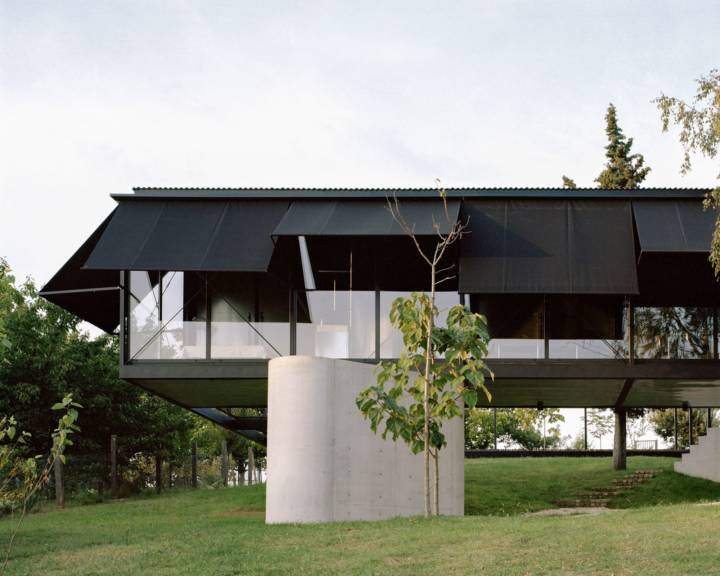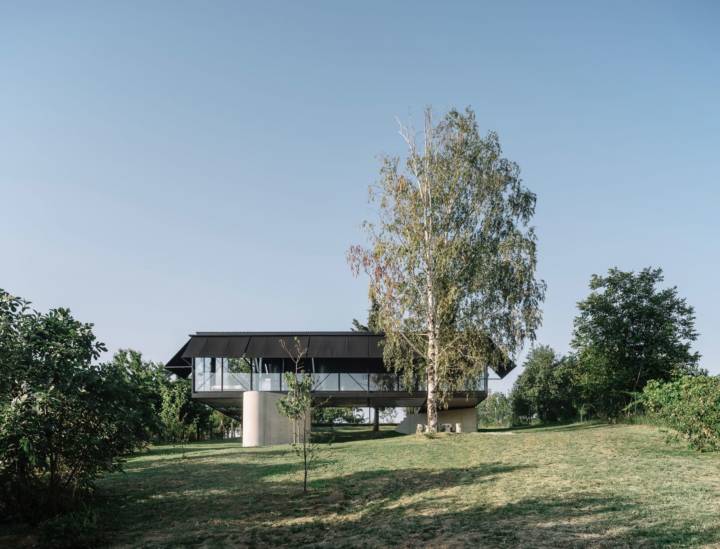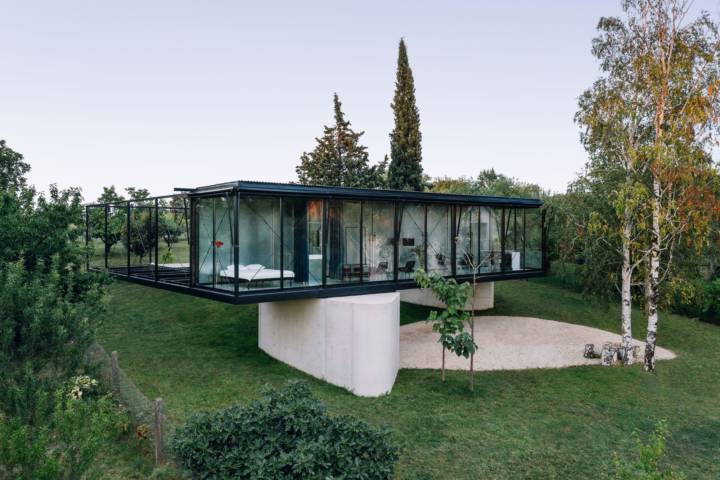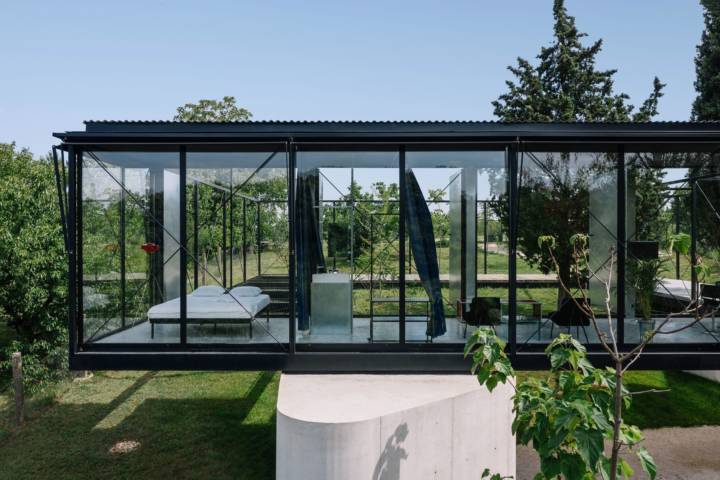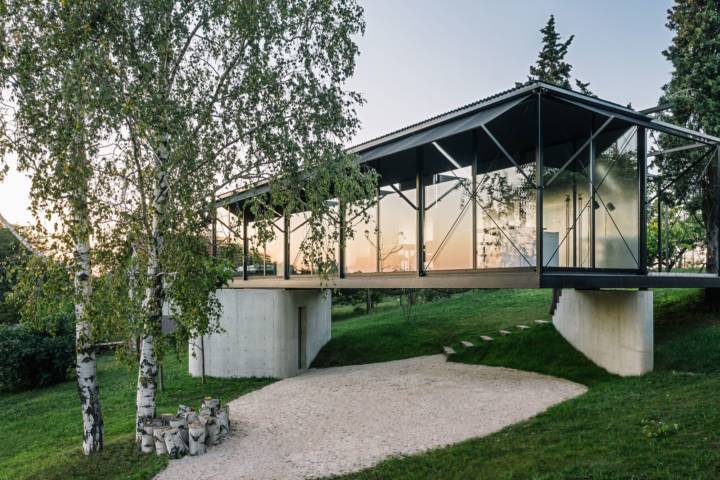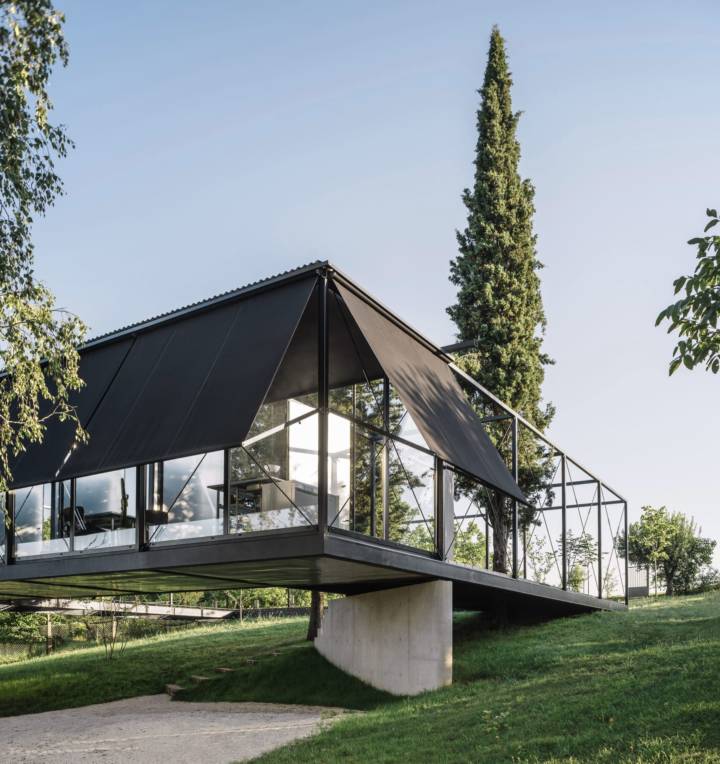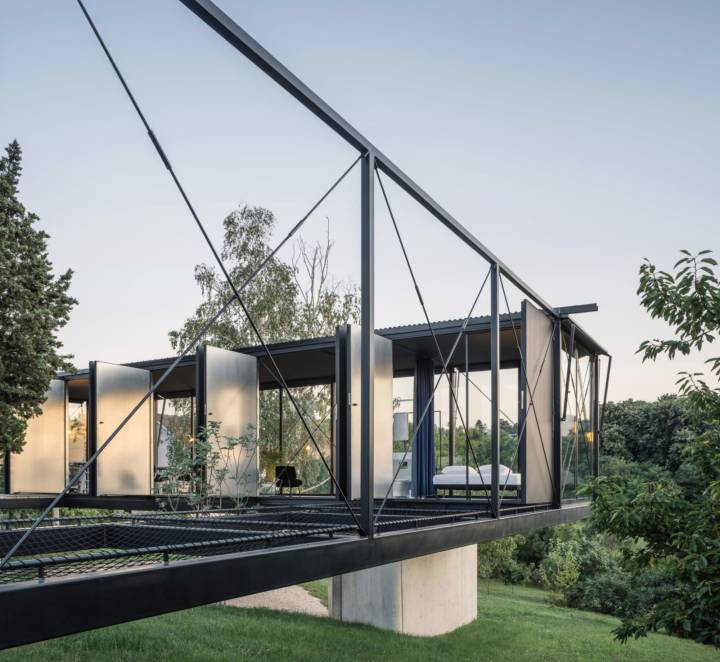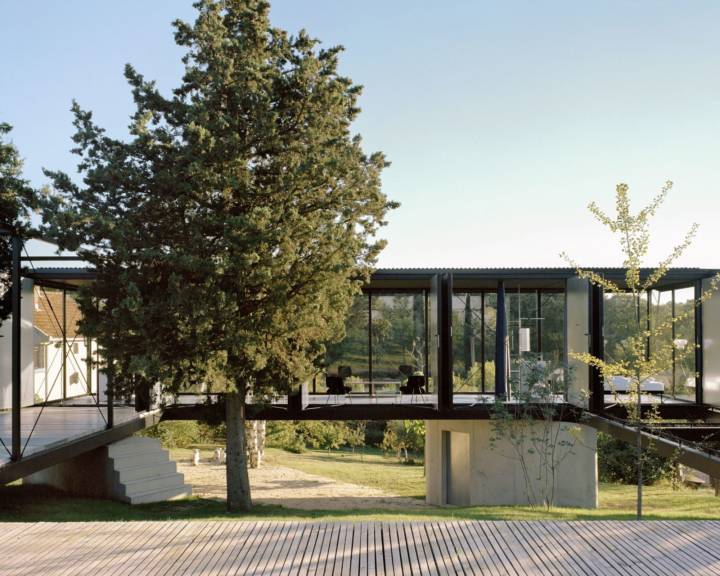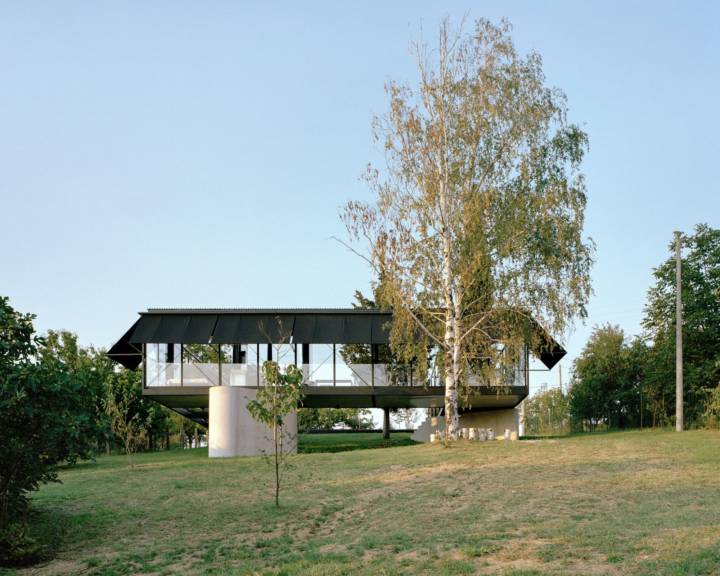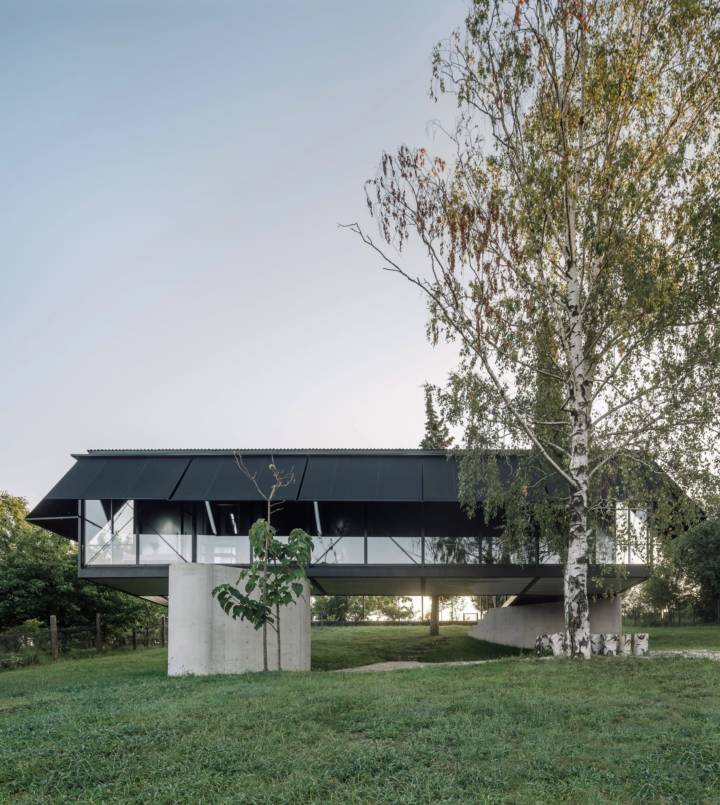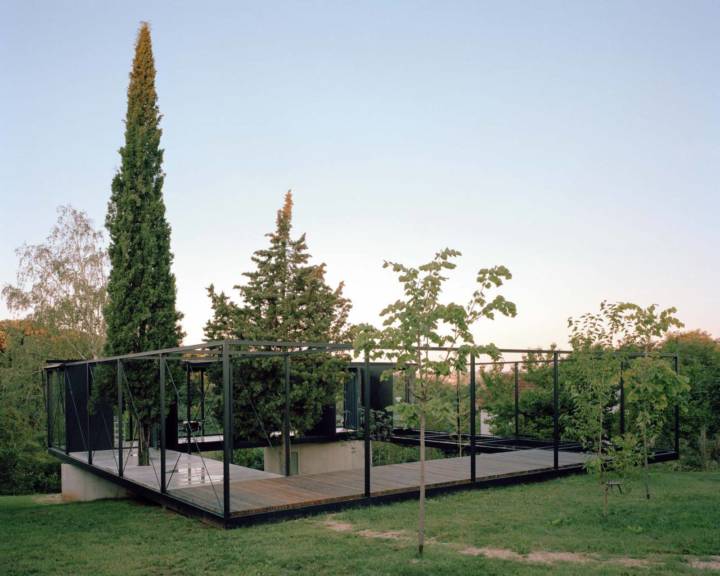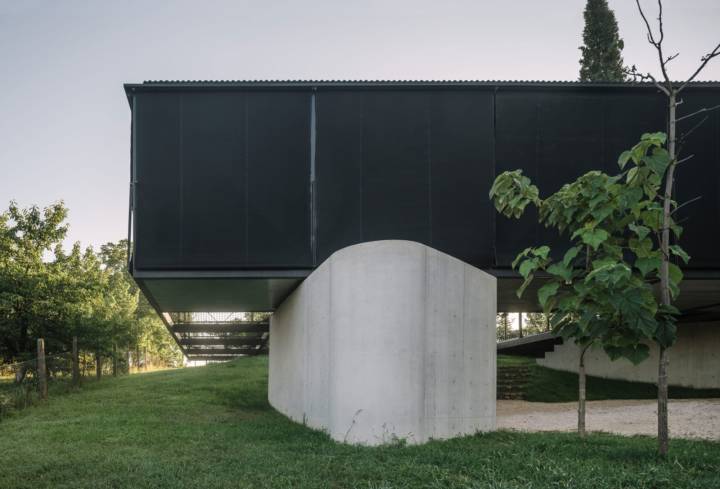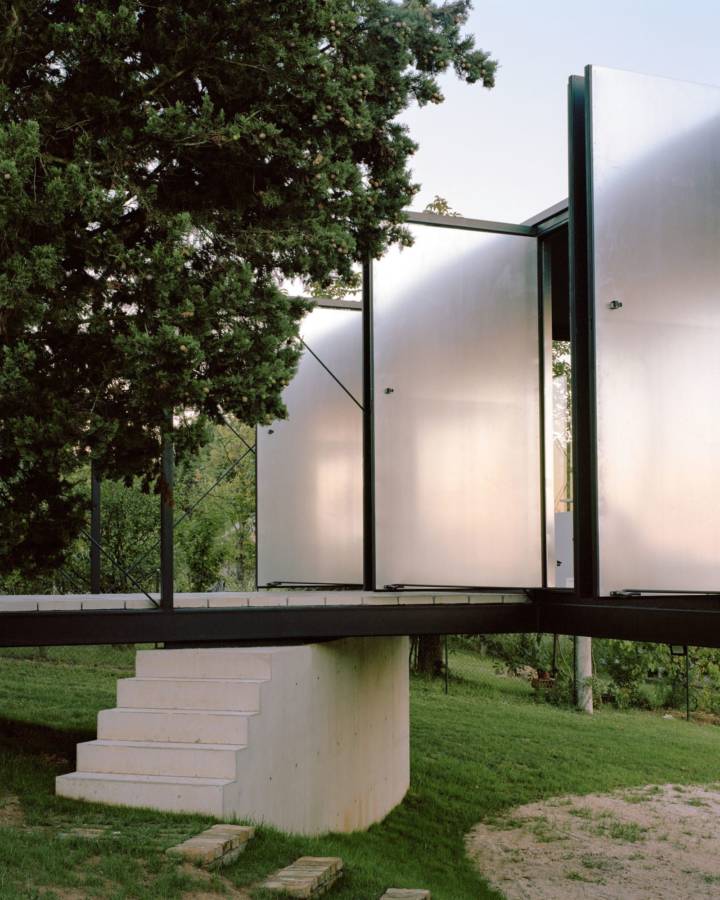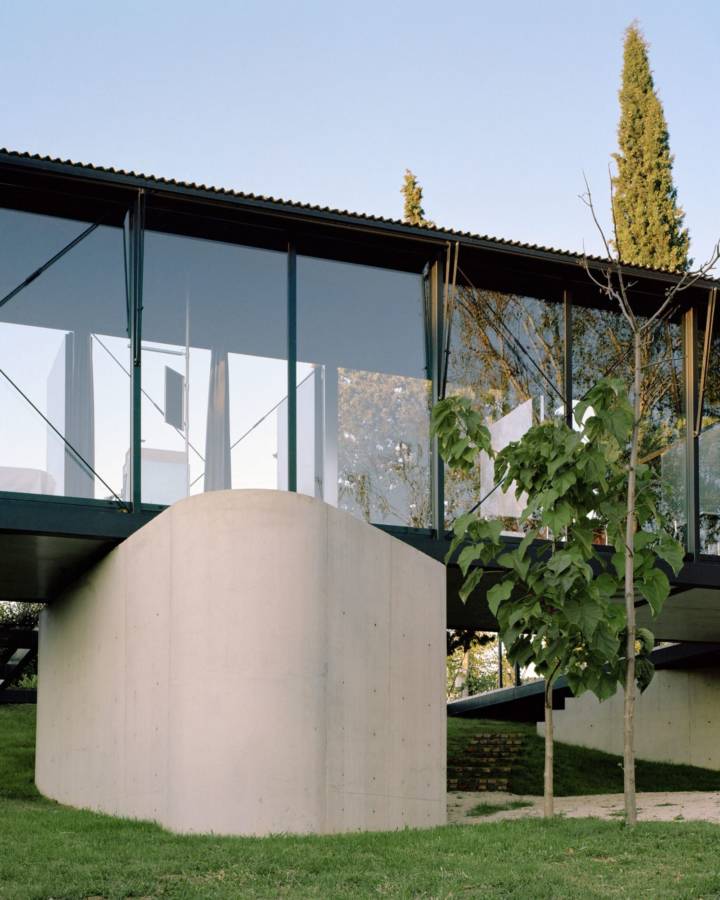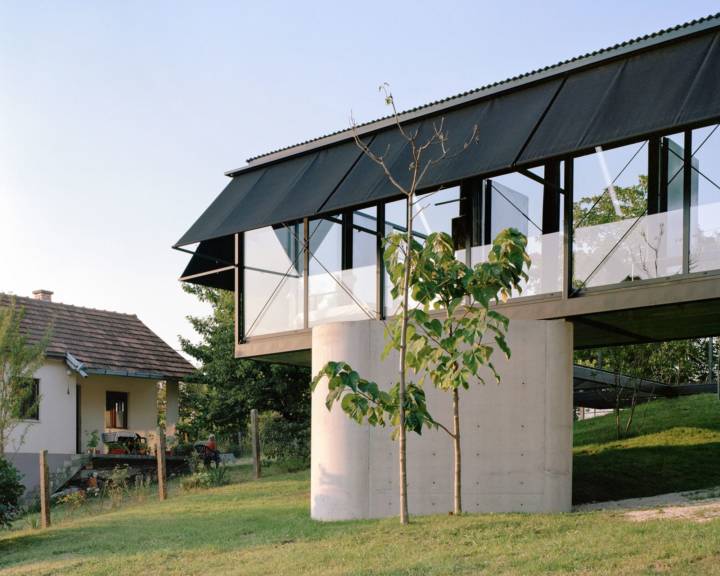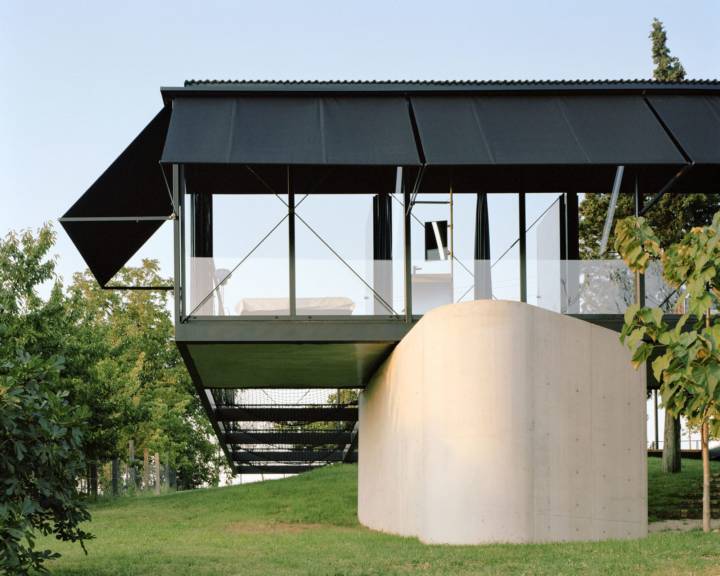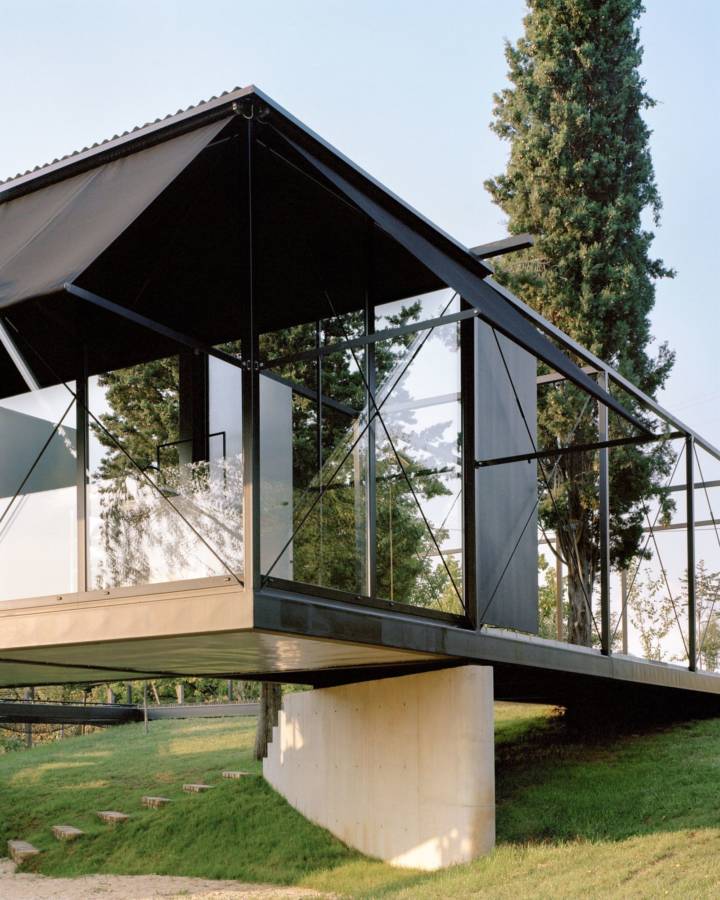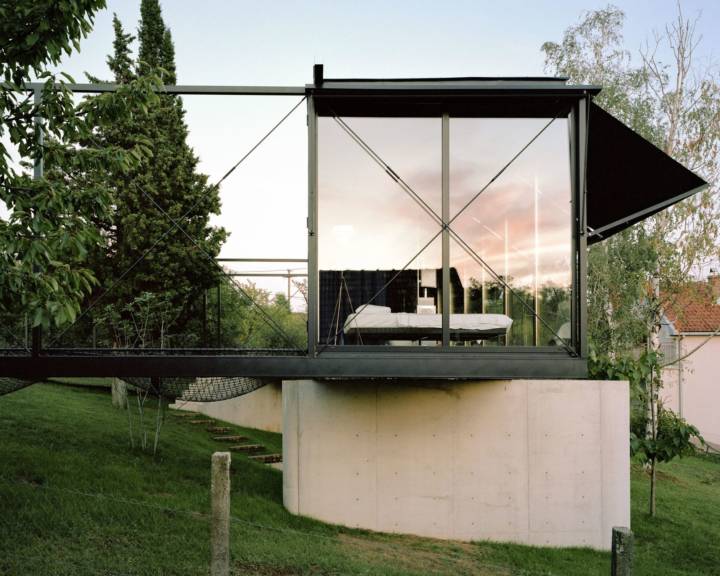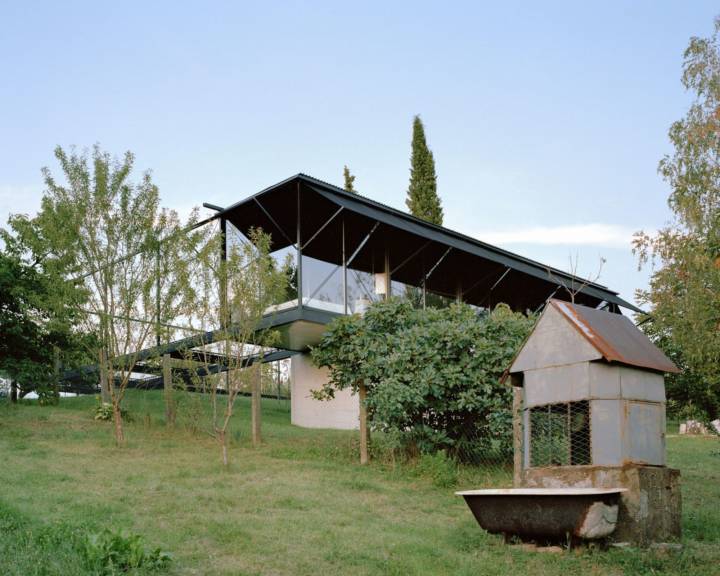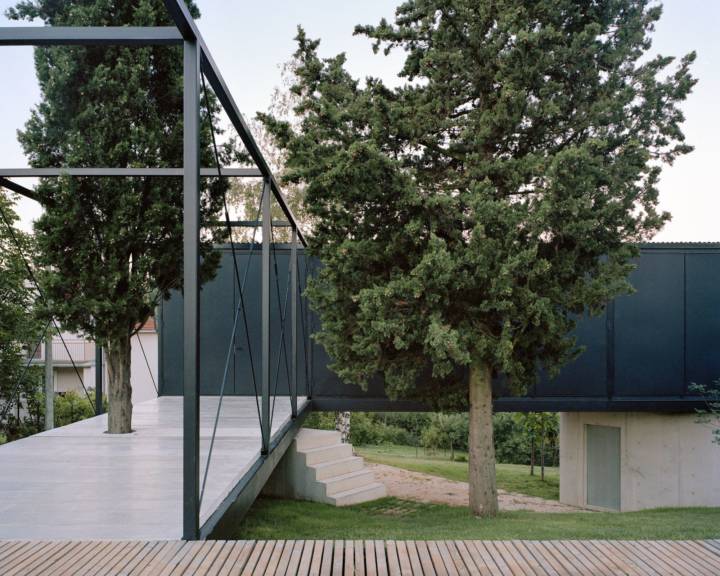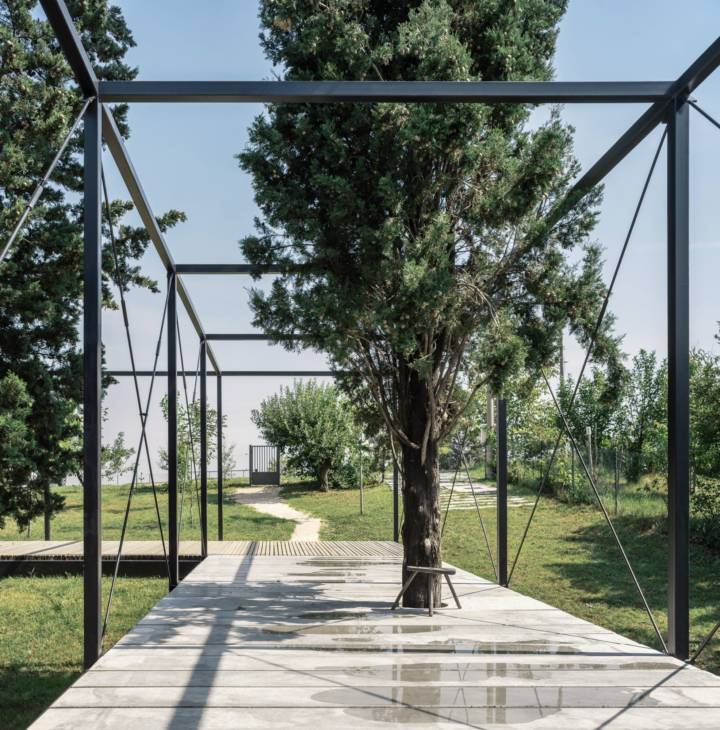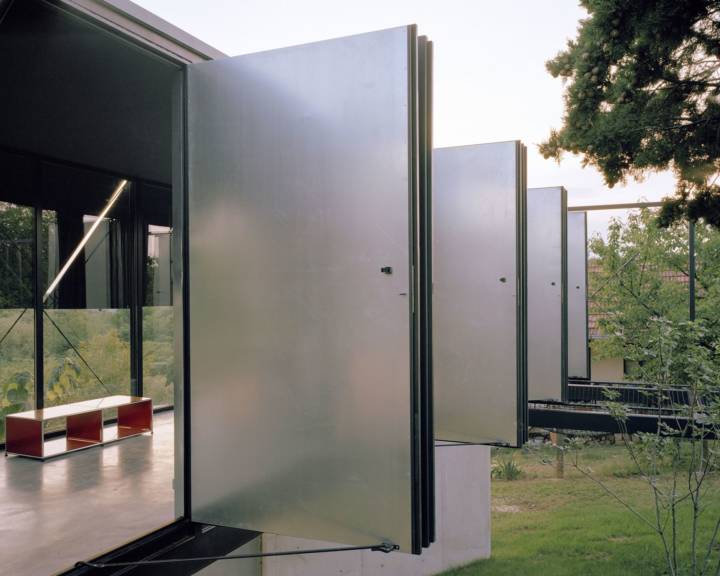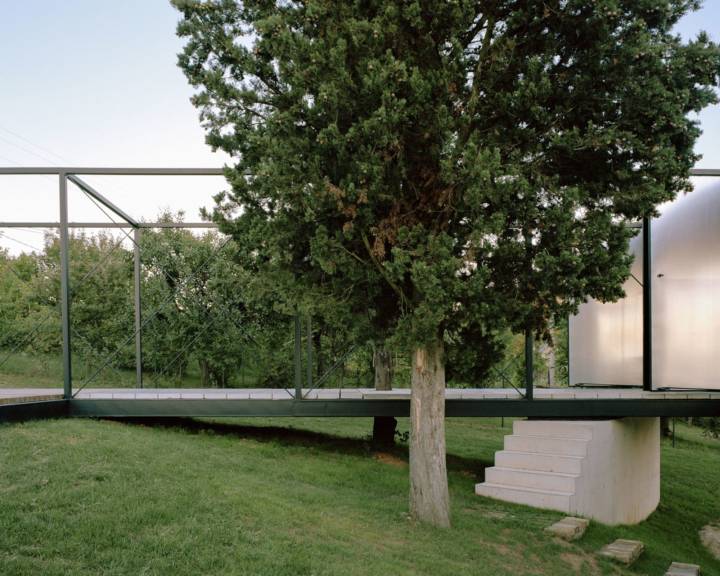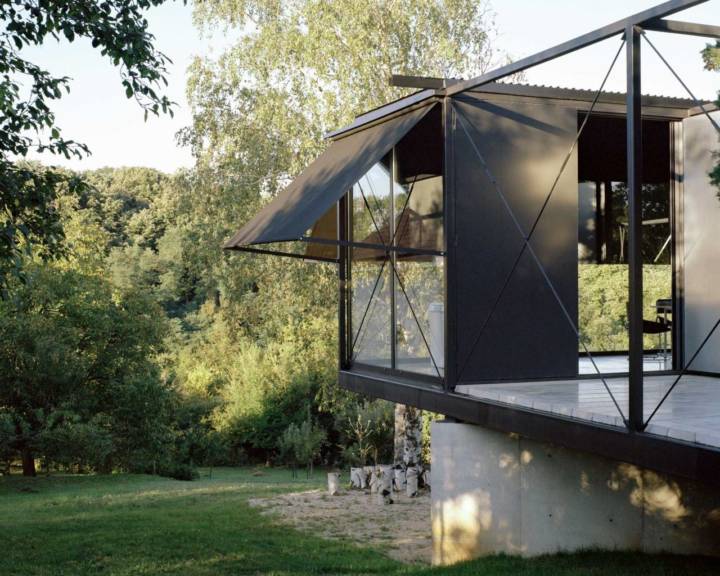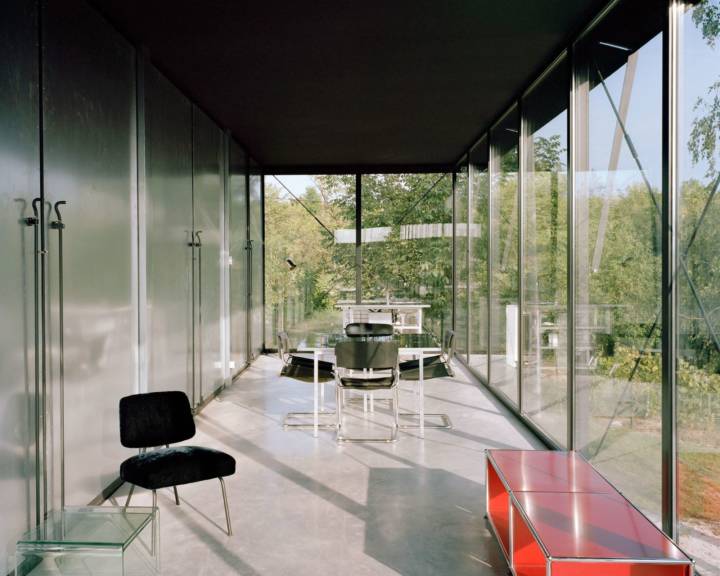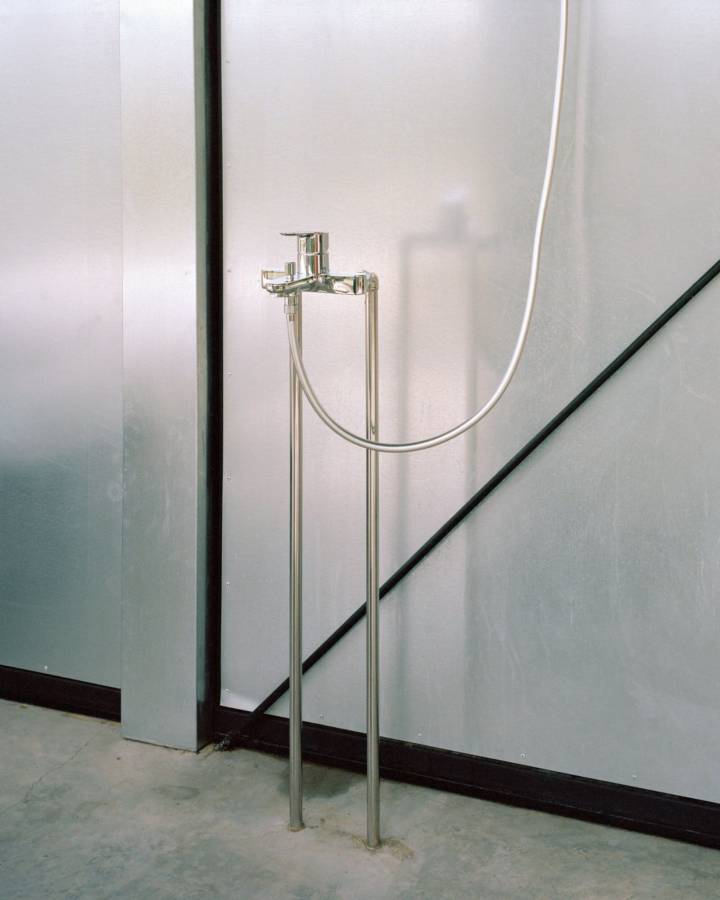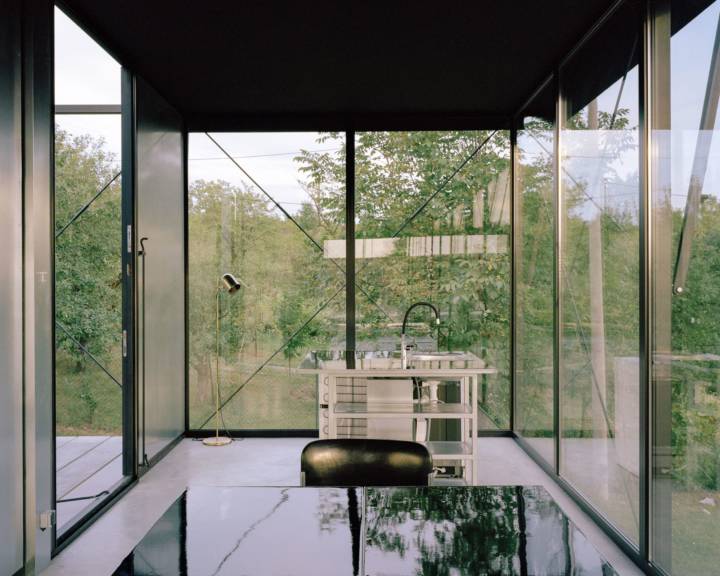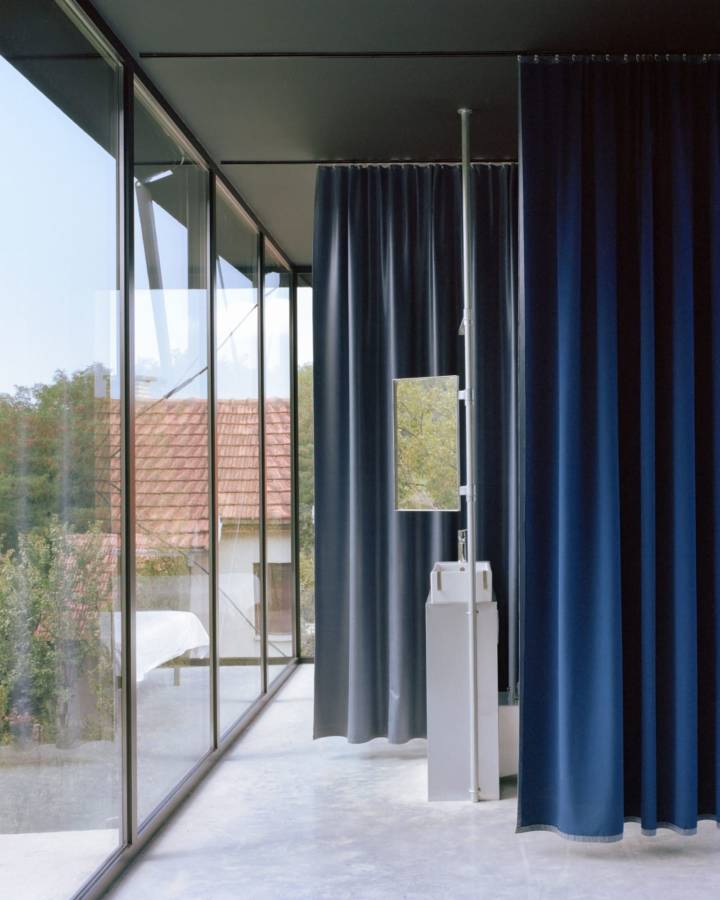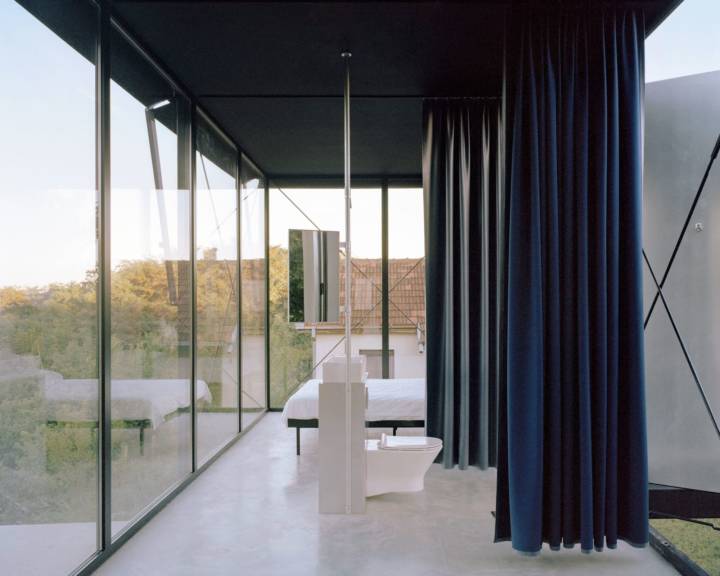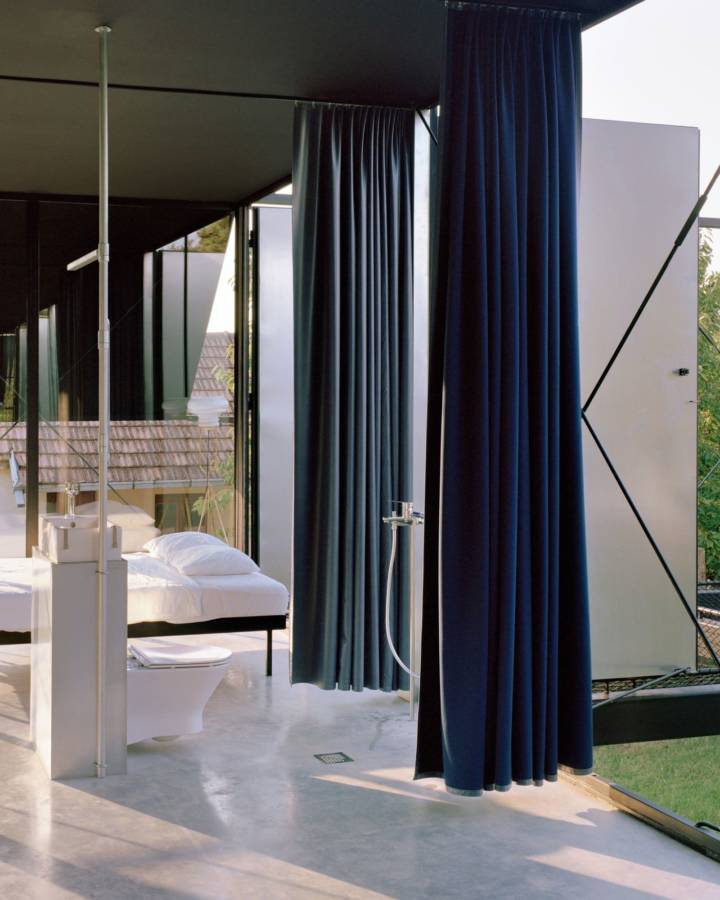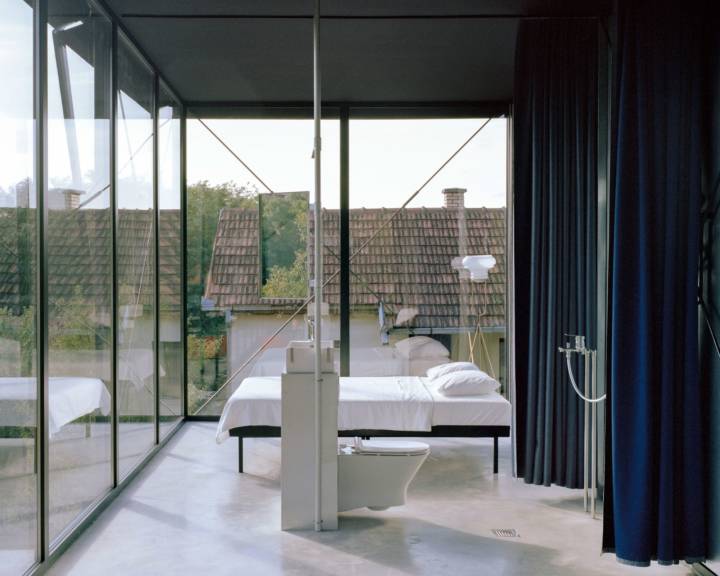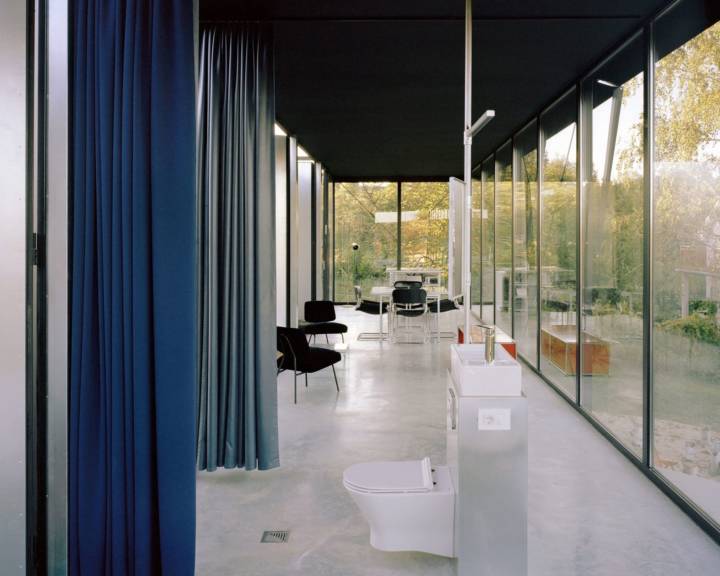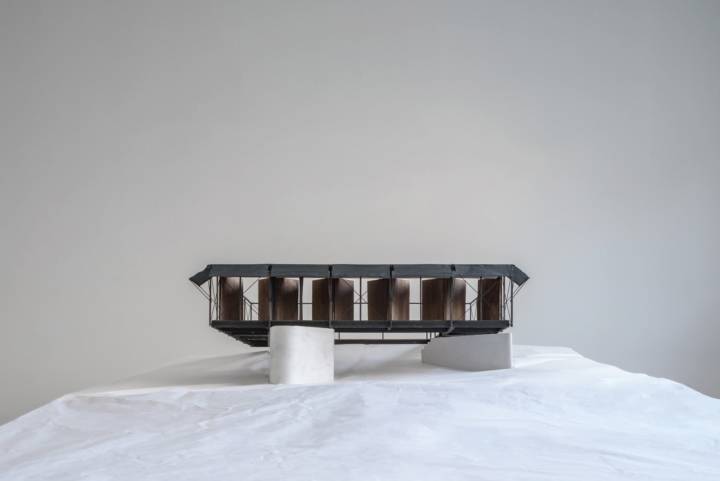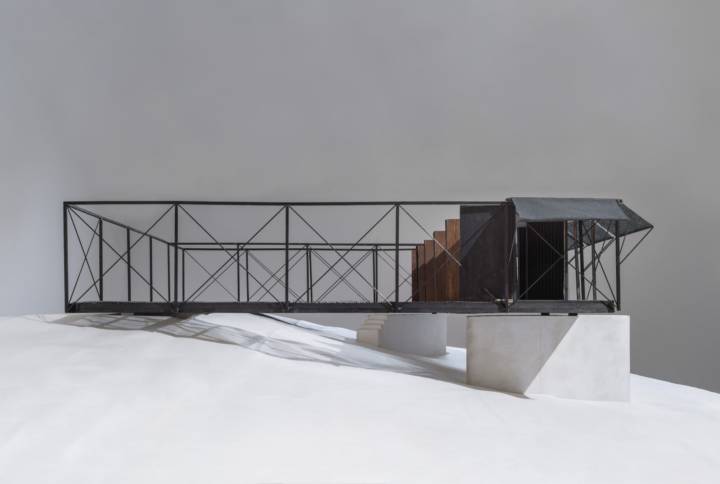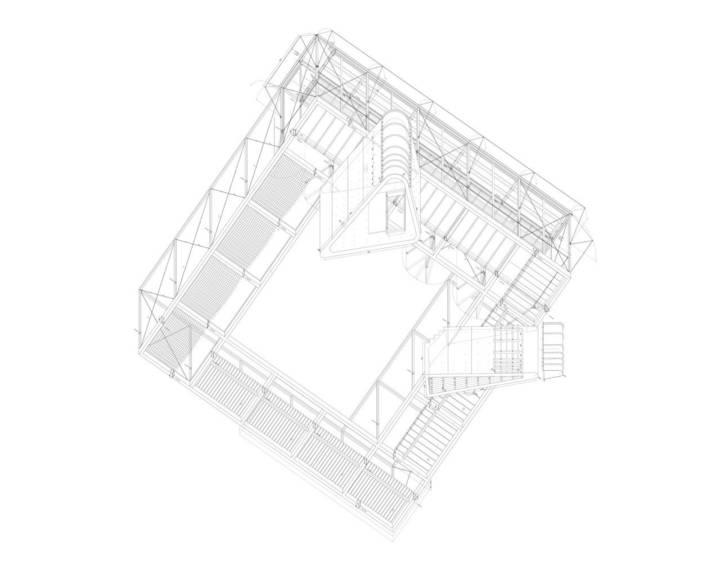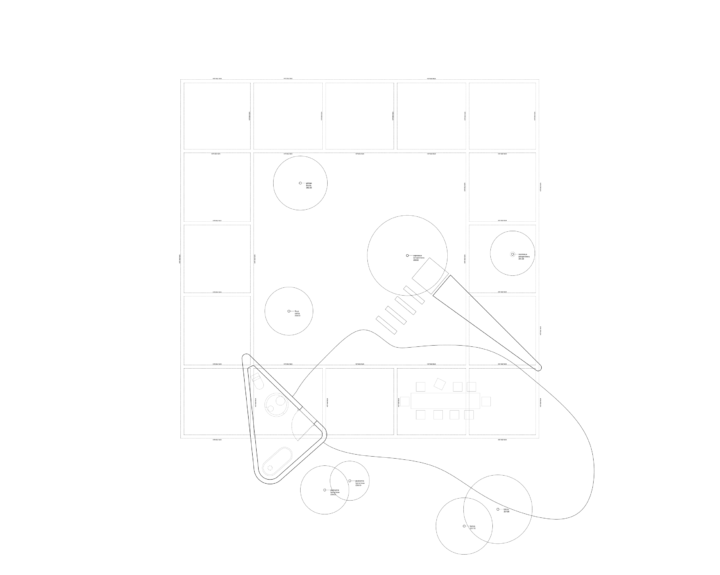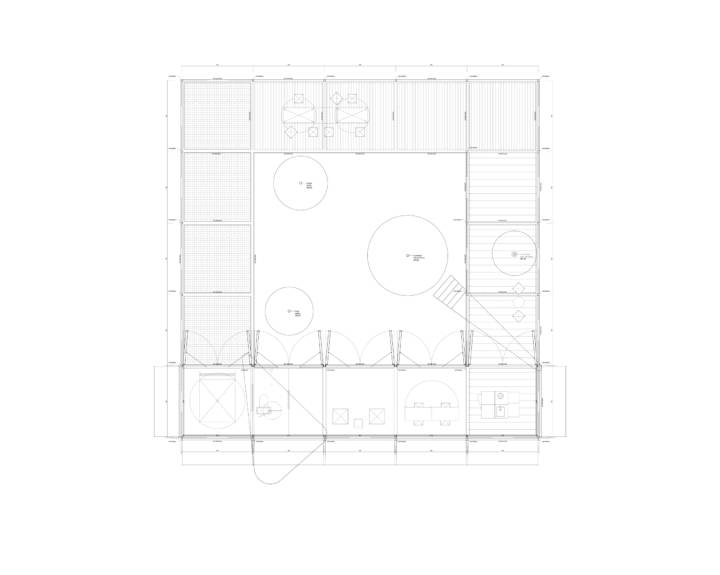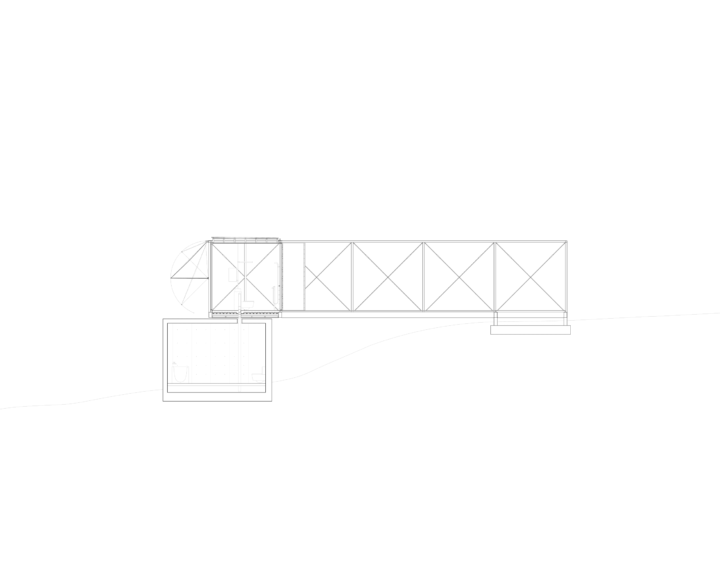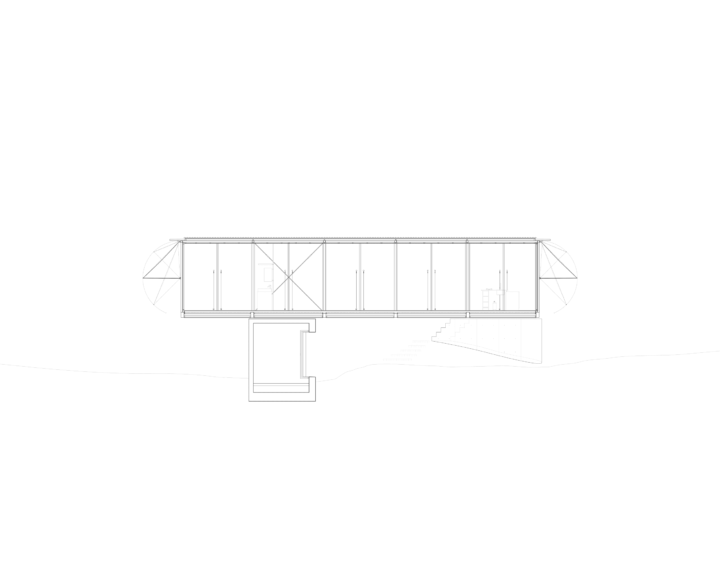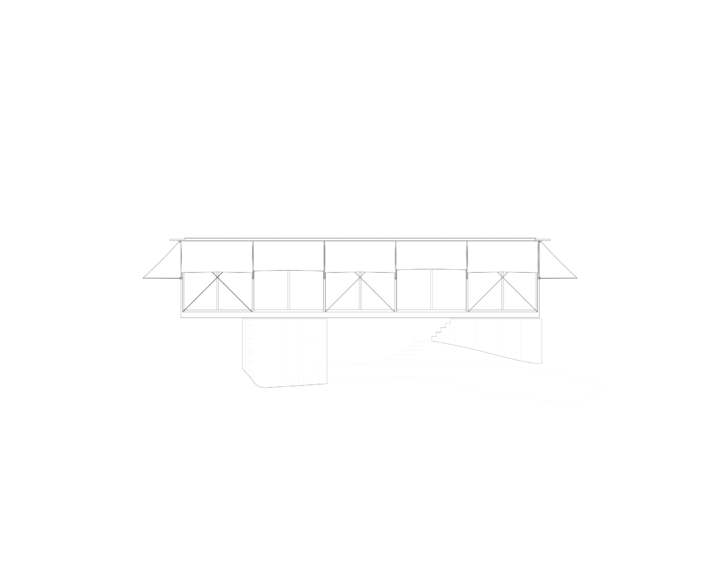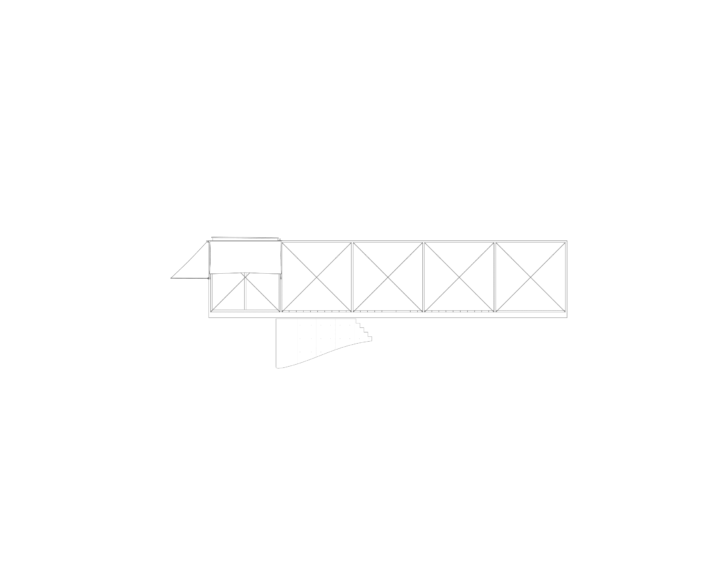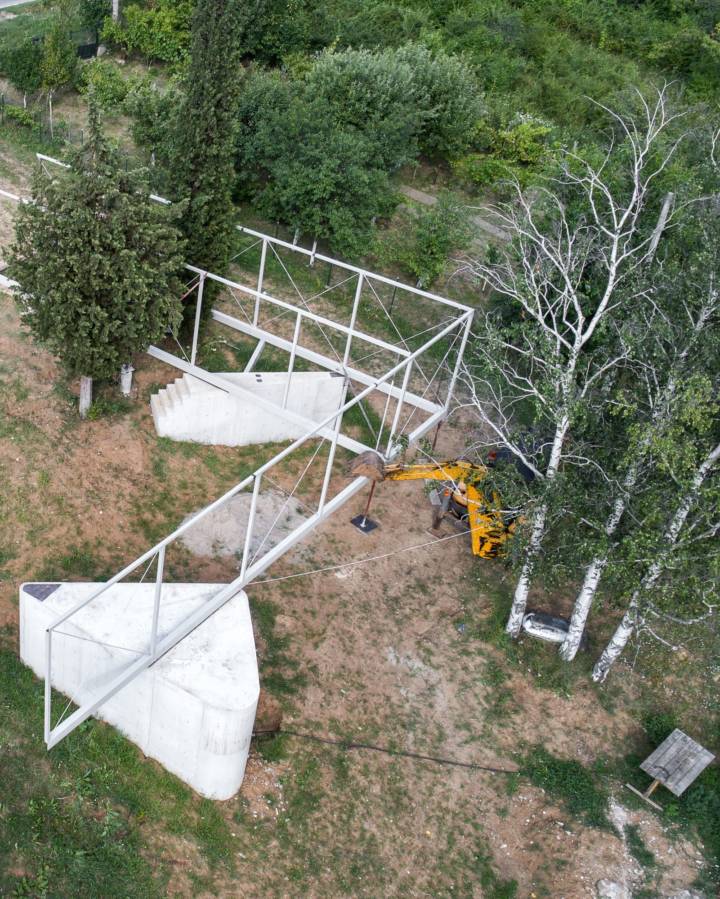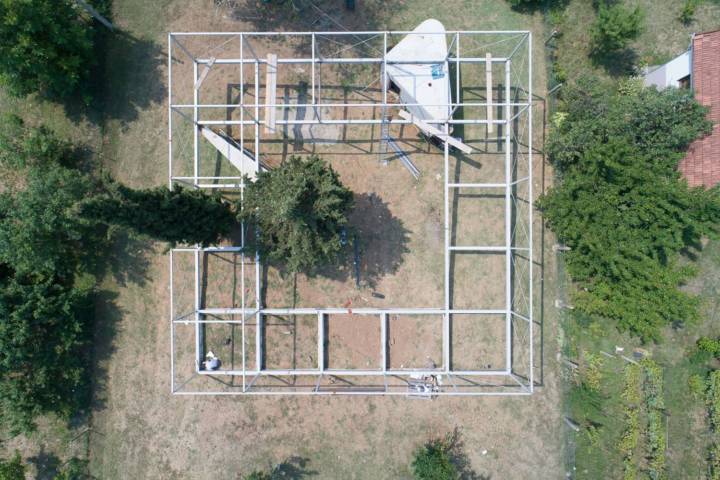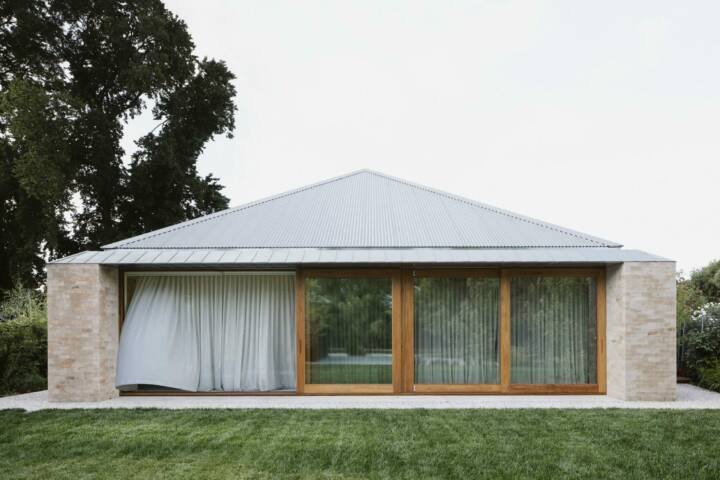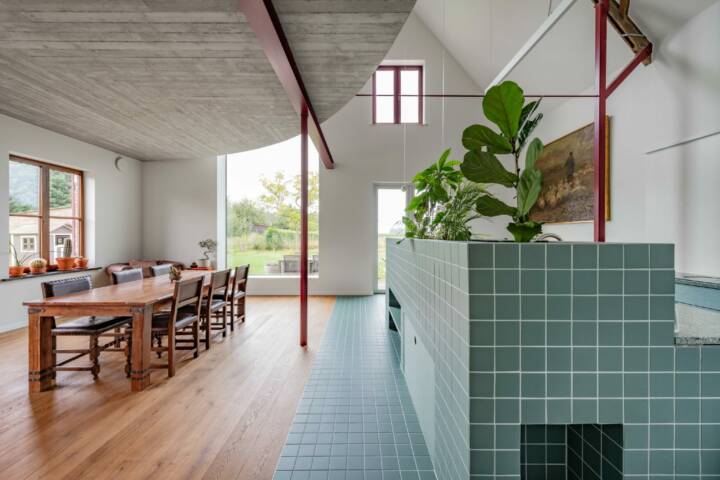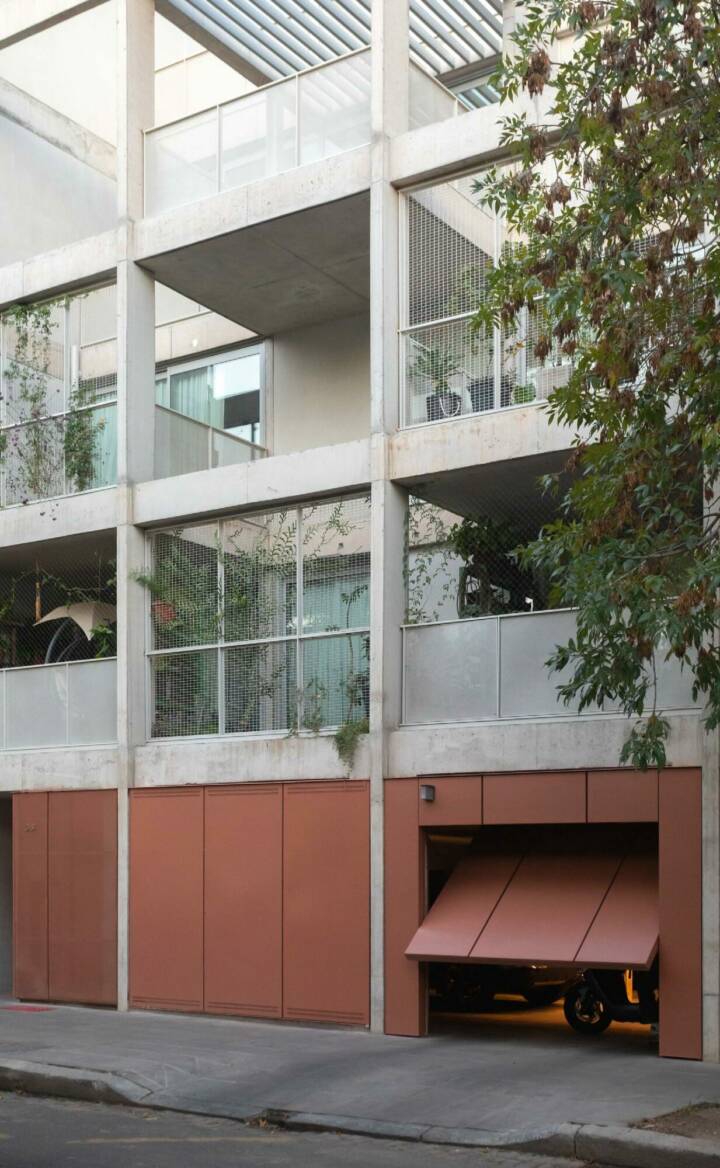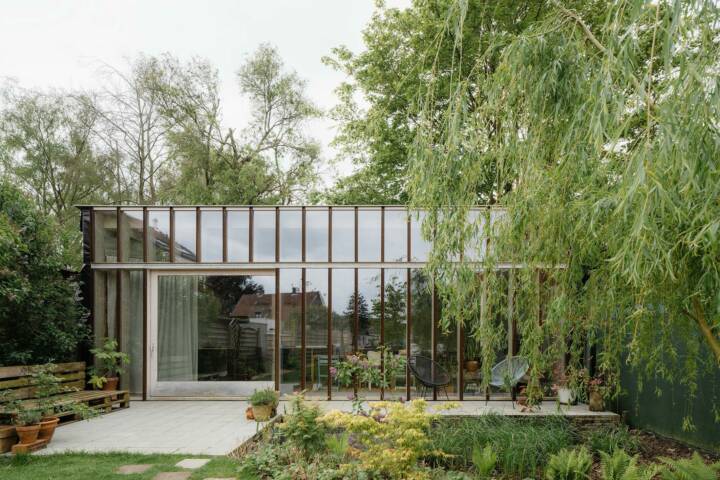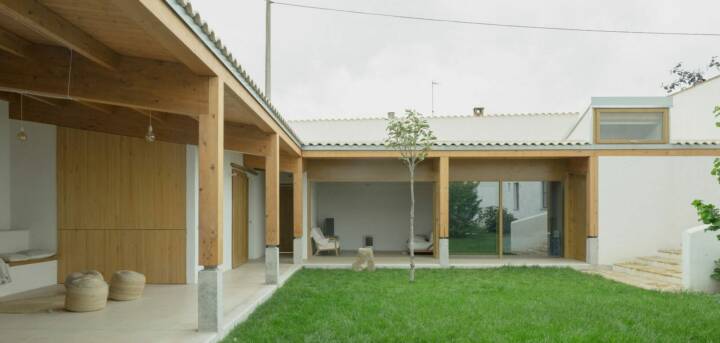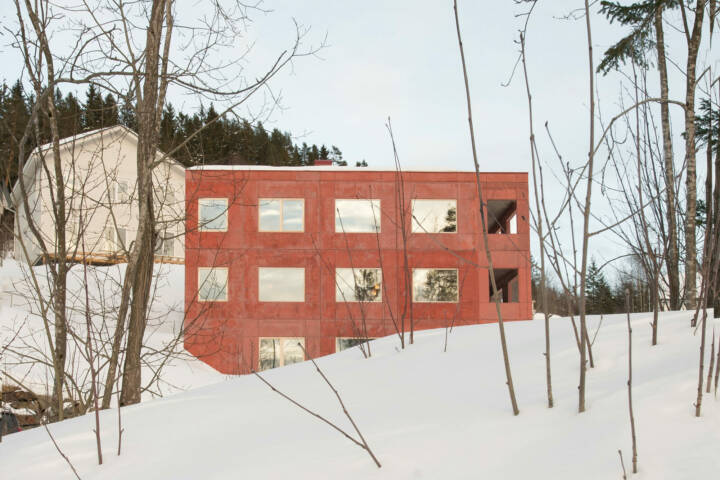Architects: TEN studio Photography: Maxime DelvauxMilos Martinovic Construction Period: 2020 Location: Belgrade, Serbia
The Avala House is a residence situated in a pastural landscape on Avala mountain near Belgrade in Serbia. The house is a case study on how design effort can turn sufficiency into a desirable form for living.
The open frame
The house is a single-story space built over an existing southward inclining orchard garden. It is organised by a 3.2 metre grid frame, measuring 16 by 16 metre square, with an interior cut out of 9.6 by 9.6 metres revealing the terrain below. The surrounding surface forms both the inhabited area of the house and delimits the building perimeter. The frame utilises 80 millimetre square steel tube profiles welded in place and fixed to the structural minimum of three foundation points on the terrain. These points define the arrival area on the ground plane, and the positioning of two large concrete forms –like boulders in the landscape – dedicated to both an outside garden staircase and a storage space with a garden bathroom. The sloping terrain continues between and underneath the house, offering a shaded outdoor living space, and introduces the landscape, trees and natural ground cover into the central space of the building. The main floor above sets a new datum within the topography of the existing slope overlooking the surrounding forest. The open structure embraces the immediate landscape while setting a new clear geometry and strong architectural outline.
Read MoreCloseThe plan is developed on the outer grid as a sequence of four terraces interlocking at corners to offer a new horizon for dwelling. Each terrace holds a different surface material, providing possibilities for a variety of use. The boundaries of the steel frame are constantly challenged by these alterations in material (a hanging net, sheet steel, pre-cast concrete, the open frame) or through the performance of its movable elements. These allow the house to undergo a total transformation of scale and atmosphere.
The opaque wall facing the central interior space is made of 10 large pivoting steel doors, allowing the living area to shift from a singular indoor space of 50 square metres to embrace the 156 square metre volumes of the four outdoor terraces. The large stretch of glass on the southern facade of the frame extends the living space to the rise of the distant hills. The customised sun shading closes this expanse, giving a singular interior space, discretely partitioned by a series of floor to ceiling full-length curtains defining the sleeping area from the kitchen, dining, sitting, and bathroom. In its open state, the main living is one in plan, dedicating the entire space to a single program if desired. The house inverts the priority of building a traditional protected shelter in nature, by allowing various scenarios of exposure to nature within the building.
Every element of the house emphasises the performance of structure and space, providing either weight or lightness at specific points, expanse or contraction at others. This is exemplified in the visible joints of the main steel frame, the connections to the bearing points, the exposed bracing and raw material finish. All details are revealed. There is a kind of directness that makes the house accessible to all.
The means of making
The owner – a local craftsman working on interior refurbishments and domestic maintenance – invited TEN to design, develop and build the house. Means to the production of the house were modest, and skill was local. The owner collaborated with a metal workshop close to the site.
The central premise of the project was to include the future owner in the process of making by specifying only available local material and construction knowledge, with design decisions on durable structures and surfaces to be repaired. This challenged the norm of architecture being a complete conceptual product, delivered to the site via the client, but instead opened the process as a genuine conversation on the process of construction, the future use and practical and necessary maintenance.
The conversation identified material resources, workshop skill and capacities within the range of the immediate region. It also brought about novel solutions like the in- situ casting of the exposed concrete foundations with recycled steel sheets. The accuracy of the formwork was determined by interior joiners, the casting with a self-compacting concrete mixture developed in dialogue with local subsidiaries and contractors. This not only contributed to the local economy but through experimentation in the procedure of construction, offered new applications for local construction skills. Left exposed, this reveals the proof of labour and skill in the forces driving construction, while the formal expression demonstrates the human factor in the production of dwelling. This extends the dialogue originating from the pioneers of Yugoslavian Modernism – a movement instrumental in the transformation of society through the local adaptation of progressive technologies and self- determination in design and construction. In the same way, the making of Avala House in the form of the ideal contemporary home uses everyday materials, formed personally by the skills of local makers to create a product of regional significance.
Text provided by the architect.
